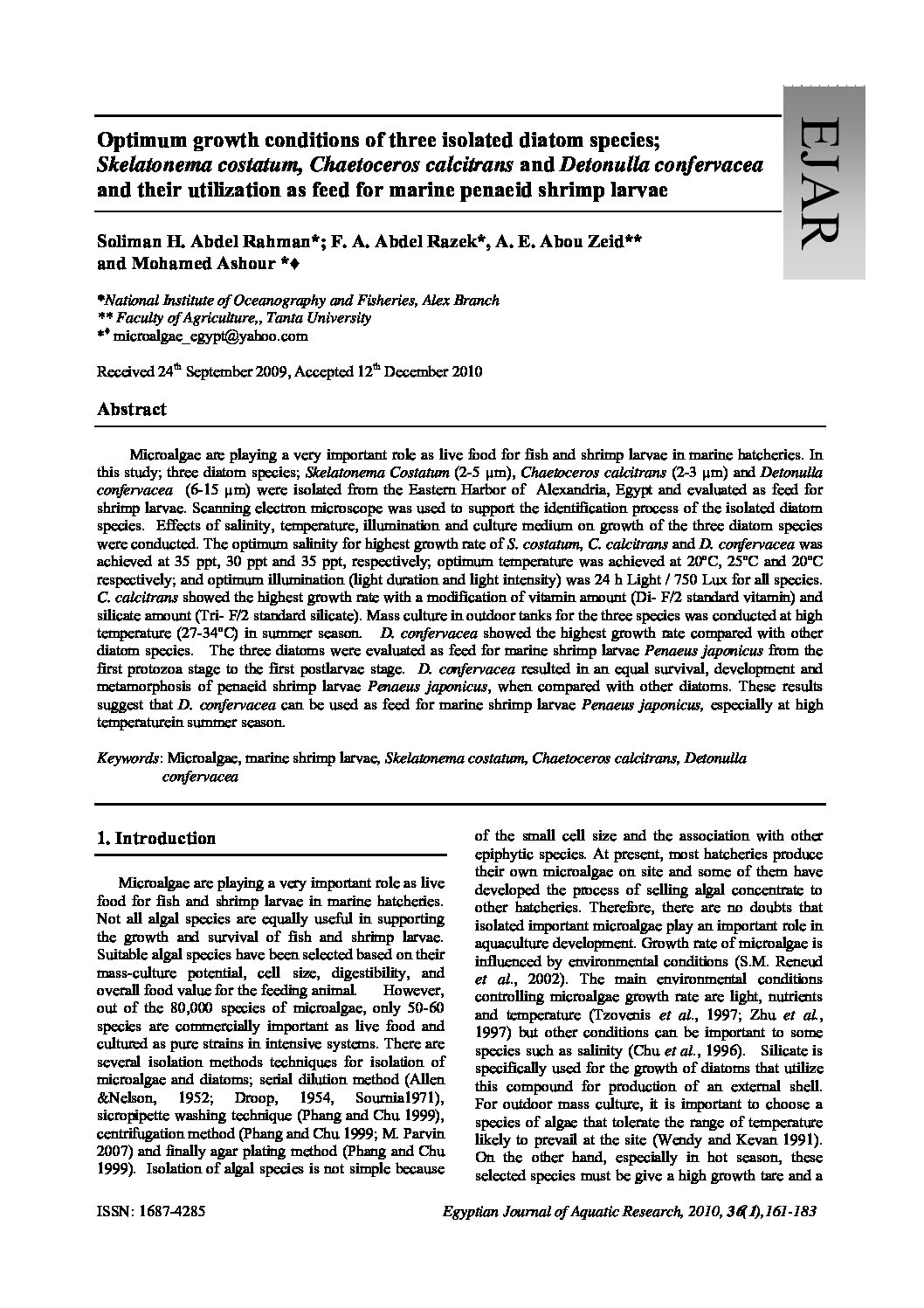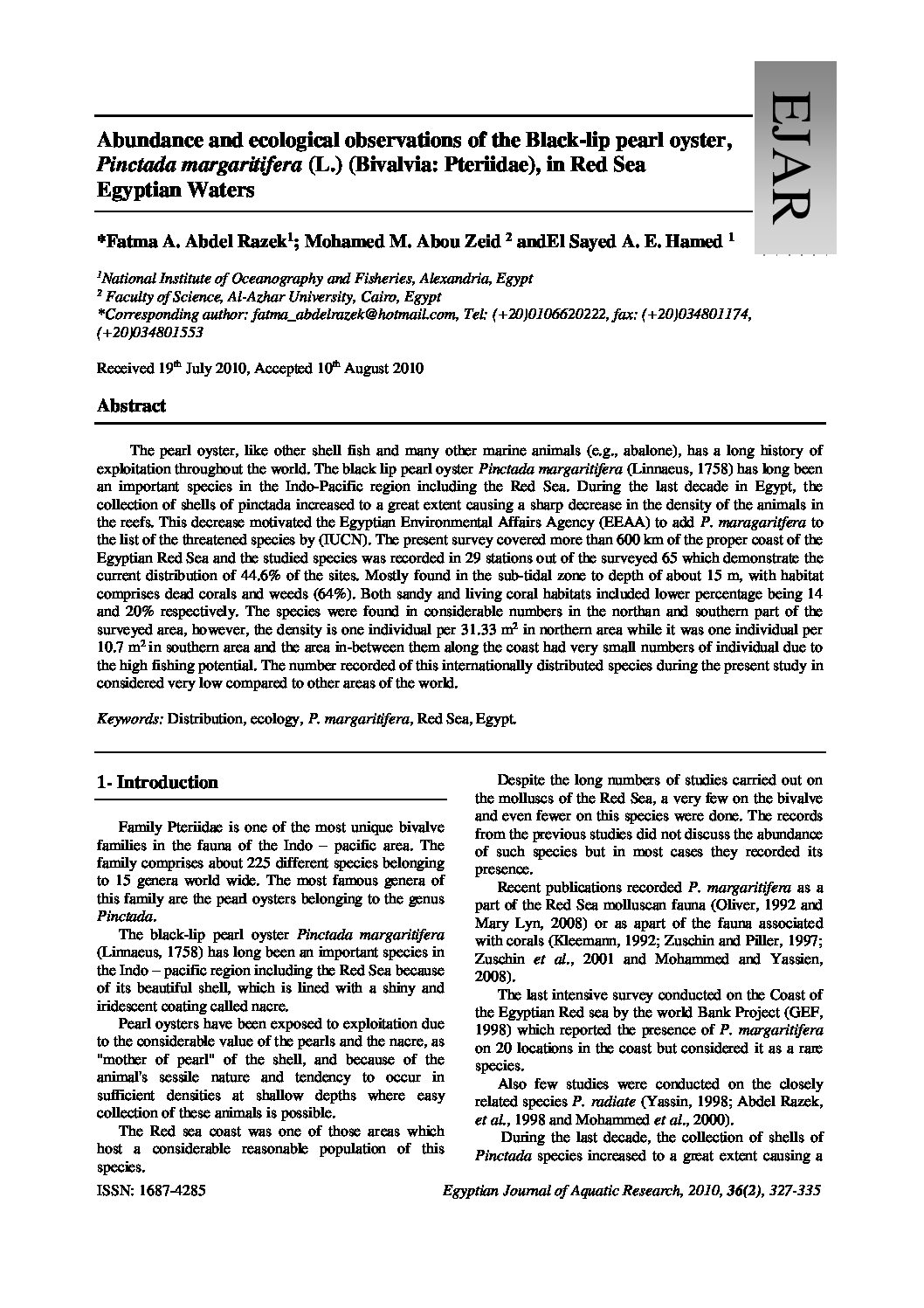Categories
vol-36Optimum growth conditions of three isolated diatom species;
Skelatonema costatum, Chaetoceros calcitrans and Detonulla confervacea
and their utilization as feed for marine penaeid shrimp larvae
Soliman H. Abdel Rahman*; F. A. Abdel Razek*, A. E. Abou Zeid**
and Mohamed Ashour *♦
*National Institute of Oceanography and Fisheries, Alex Branch
** Faculty of Agriculture,, Tanta University
*♦
[email protected]
Received 24th September 2009, Accepted 12th December 2010
Abstract
Microalgae are playing a very important role as live food for fish and shrimp larvae in marine hatcheries. In
this study; three diatom species; Skelatonema Costatum (2-5 µm), Chaetoceros calcitrans (2-3 µm) and Detonulla
confervacea (6-15 µm) were isolated from the Eastern Harbor of Alexandria, Egypt and evaluated as feed for
shrimp larvae. Scanning electron microscope was used to support the identification process of the isolated diatom
species. Effects of salinity, temperature, illumination and culture medium on growth of the three diatom species
were conducted. The optimum salinity for highest growth rate of S. costatum, C. calcitrans and D. confervacea was
achieved at 35 ppt, 30 ppt and 35 ppt, respectively; optimum temperature was achieved at 20ºC, 25ºC and 20ºC
respectively; and optimum illumination (light duration and light intensity) was 24 h Light / 750 Lux for all species.
C. calcitrans showed the highest growth rate with a modification of vitamin amount (Di- F/2 standard vitamin) and
silicate amount (Tri- F/2 standard silicate). Mass culture in outdoor tanks for the three species was conducted at high
temperature (27-34ºC) in summer season. D. confervacea showed the highest growth rate compared with other
diatom species. The three diatoms were evaluated as feed for marine shrimp larvae Penaeus japonicus from the
first protozoa stage to the first postlarvae stage. D. confervacea resulted in an equal survival, development and
metamorphosis of penaeid shrimp larvae Penaeus japonicus, when compared with other diatoms. These results
suggest that D. confervacea can be used as feed for marine shrimp larvae Penaeus japonicus, especially at high
temperaturein summer season.
Keywords: Microalgae, marine shrimp larvae, Skelatonema costatum, Chaetoceros calcitrans, Detonulla
confervacea







